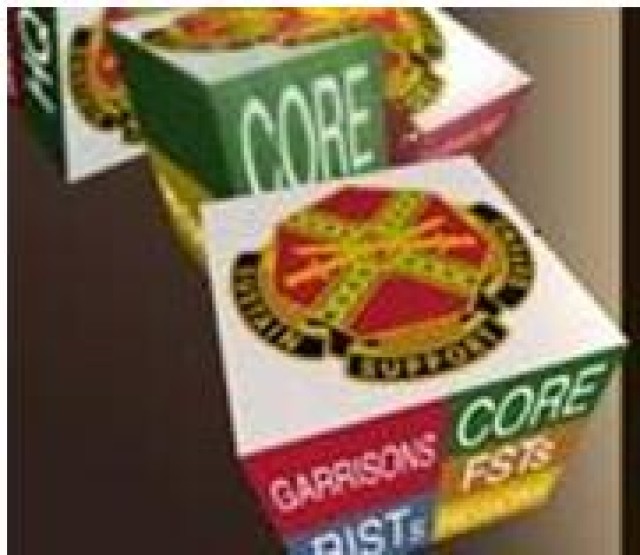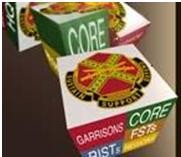ALEXANDRIA, Va. - With Installation Management Command entering the initial operating capability (IOC) phase of its transformation, the command called on the Army Management Staff College to host a new, two-week Training Course.
The objective' Teach 40 new members of Region Installation Support Teams (RISTs) to do a job that has never existed before in the Army.
The students are some of the most experienced and diversified installation management specialists in the business.
They have held senior level positions in a variety of installation management functional areas, and were chosen for these senior positions because of the depth and breadth of their installation experience.
That experience, along with their training and the newly published Transformation Implementation Guide, will prove vital in the near future as RISTs take their places on the front lines of the IMCOM transformation to a garrison-focused enterprise.
"We learned in rehearsing the RIST concept last year that the RIST position is a vital link in the garrison support network and that it was very different from how we had done business up to this point," said Bill Morgan, chief of the IMCOM Transformation Office Texas branch.
Morgan designed and taught the first iteration of the training.
"As important as that role is, we decided to bring the RIST members together to share the knowledge we had, as well as to collect their thoughts about the direction we're going and the effectiveness of our preparation," Morgan said.
RISTs form the heart of the transformed IMCOM regions following the transfer of functional capability to the command headquarters. In each of the three Continental U.S.-based regions, RIST teams comprise 36 of the total 60 region personnel. These teams are assigned continuously to the same installations, normally three to six, depending on complexity and size.
The RIST's job is to become a full partner with the garrison commander and staff, becoming intimately acquainted with the installation's missions, challenges and opportunities. The RIST is the garrison's first point of contact and advocate for obtaining higher headquarters support.
In its role as enabler of focused garrison support, the RIST develops similar close working relationships with the functional and core elements of headquarters to ensure that IMCOM maintains its focus on Soldiers and Families during the transformation process.
These working relationships become the foundation of the RIST's position as the conduit through which taskings, reports and other communication flow between the garrison and Headquarters IMCOM.
The training just completed immersed the RIST members in installation functions, placed in the context of policies and procedures laid out in the Transformation Implementation Guide.
The training culminated in a practical exercise to project how garrison, region and headquarters IMCOM personnel and procedures will mesh to ensure a seamless transition in Garrison support.
Marnie Holder is a RIST member in West Region, who supported Fort Leavenworth during the RIST Rehearsal of Concept last year. She will continue to serve Fort Leavenworth as part of a four-person RIST that also serves three other installations - Fort Irwin, Fort Huachuca and the Presidio of Monterey.
Holder was a Manpower specialist in Resource Management for West Region prior to transformation, but she also spent about 10 years, split between Fort Lewis and Hawaii Garrison, working in MWR, Public Works, and the Office of the Garrison Commander. She also has Human Resources experience in Civilian Personnel, plus she offered her perspective on the RIST training following her graduation in late September.
"Parts of the training provided me insight and knowledge of particular functional areas I was not familiar with," Holder said. "But the most beneficial part of training was the dialogue and discussion among the students. Since we were representing 6 separate regions, we all have a different opinions and perspectives of how we (as RIST) will be utilized."
Holder sees the biggest transformation challenge as inculcating the new business processes so that actions are routed correctly to best use the new system.
"My biggest concern is IMCOM will continue to conduct business as usual and will not utilize RIST members in the capacity they are designed to be used," she said. "Throughout the past year, I have been fortunate enough to be assigned to a garrison team willing to accept and support the new RIST structure. On the down side, we did not have the opportunity to fully rehearse utilization of the Functional Support Team (FST) and Core elements within the organization. In order for our command to be successful, we need buy-in and discipline at all levels."
The Implementation Guide, resulting from the year-long rehearsal of concept, addresses the relationships and work flow between the garrison, RIST and functional teams at the headquarters. The process is different enough that the flow of action and response makes up the majority of the training and exercises conducted leading up to activation.
And while the RIST is the garrison's first point of contact for getting support above garrison level, not all action needs to flow through the RIST. Garrisons can interact directly with the FST on routine matters not governed by business rules that require RIST involvement.
These processes are summarized in flowcharts in the Implementation Guide, which is available from the IMCOM Transformation Web site.
Nonetheless, this is all new and Transformation Team leader Morgan said he expects the second iteration of the guide to be much more complete, following a year to flesh out the processes and learn from mistakes.
As a last major preparatory step to entering IOC, the command is assembling about 80 key personnel, including RIST and FST representatives, headquarters core functional representatives, and the region and headquarters leadership, to conduct a tabletop practical exercise to practice responding to three potential scenarios.
The exercise will take place in three half-day moves, in which participants are presented with various situations requiring core-FST-RIST interactions that may not be immediately obvious. Teams will work together to come up with the best solutions to the problems presented.
As of Oct. 12, RISTs and headquarters FSTs should have begun establishing the working relationships that will enable IMCOM to really focus its attention on garrisons. By this time, garrison leaders should know their RIST representatives, at least by name, and should be getting better acquainted in the coming weeks and months.


Social Sharing